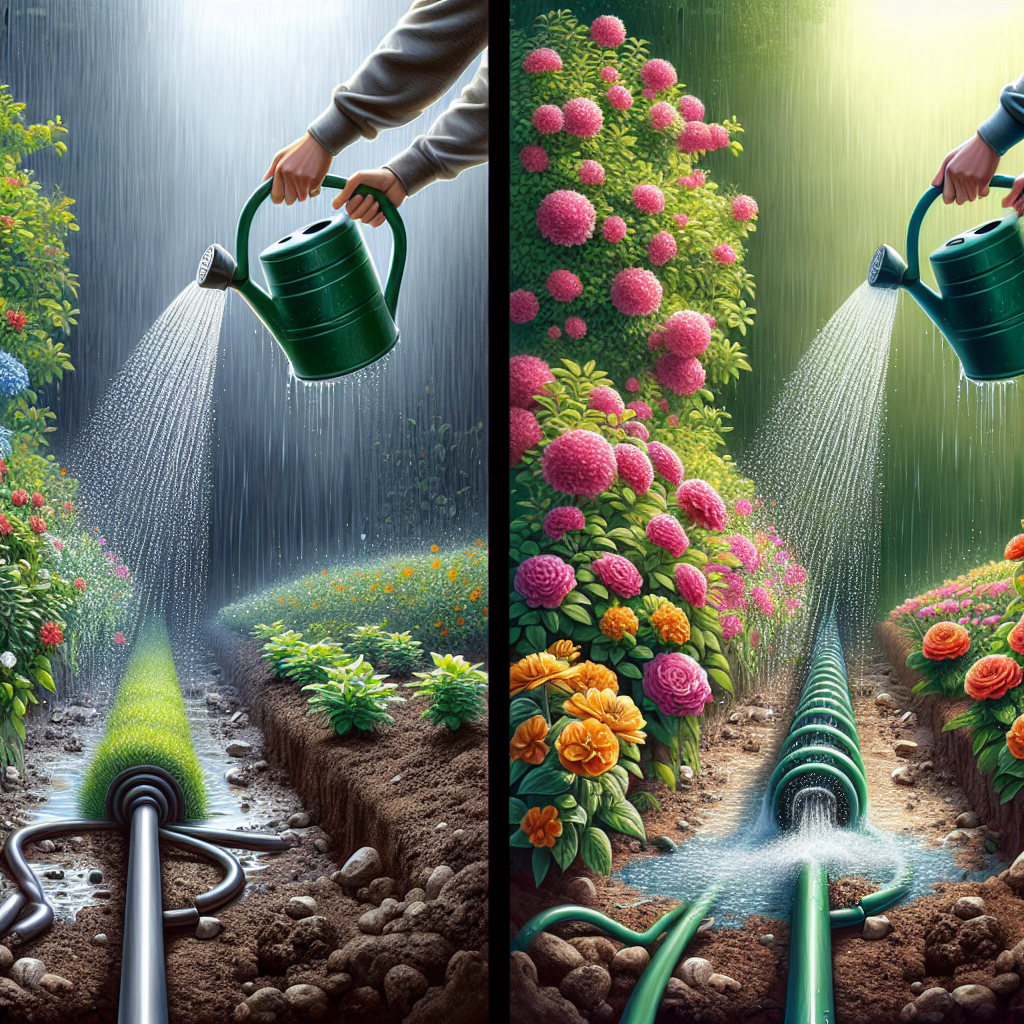When it comes to watering your garden, there are two main methods that you can choose from: traditional watering and slow drip irrigation. Each method has its own advantages and disadvantages, and the best option for your garden will depend on a variety of factors such as the type of plants you are growing, the size of your garden, and your personal preferences. In this article, we will discuss the pros and cons of each method to help you determine which is best for your garden.
Traditional watering, also known as overhead watering, is a common method used by many gardeners. This method involves using a hose or watering can to water the plants from above. Traditional watering is relatively quick and easy, making it a convenient option for gardeners who don’t have a lot of time to spend on their gardens. However, there are some drawbacks to traditional watering.
One of the main disadvantages of traditional watering is that it can lead to water wastage. When you water your plants from above, much of the water can be lost to evaporation or runoff before it has a chance to reach the plant roots. This means that you may need to water more frequently in order to ensure that your plants are getting enough water.
In addition, traditional watering can increase the risk of disease in your garden. When you water from above, the foliage of your plants can become wet, creating an ideal environment for fungal diseases to thrive. Over time, this can weaken your plants and make them more susceptible to pests and other issues.
On the other hand, slow drip irrigation is a more efficient method of watering that delivers water directly to the plant roots at a slow and steady pace. This method involves using a system of hoses or tubes with emitters that release small amounts of water over an extended period of time. Slow drip irrigation helps conserve water by minimizing evaporation and runoff, making it an environmentally-friendly option for gardeners.
One of the main advantages of slow drip irrigation is that it promotes deeper root growth in plants. By delivering water directly to the root zone, slow drip irrigation encourages plants to develop strong and healthy root systems that are better able to withstand drought conditions. This can lead to healthier plants that require less frequent watering.
Another benefit of slow drip irrigation is that it reduces weed growth in your garden. When you water from above with traditional methods, you may inadvertently provide moisture for weed seeds to germinate and grow. With slow drip irrigation, only the areas around your plants’ roots receive water, leaving less opportunity for weeds to take hold.
Despite these benefits, there are some drawbacks to consider when using slow drip irrigation in your garden. One potential downside is that setting up a slow drip system can be more time-consuming and costly than traditional watering methods. You may need to invest in specialized equipment such as hoses, emitters, and timers in order to properly install a slow drip system.
Additionally, slow drip irrigation requires regular maintenance to ensure that all components are functioning properly. Over time, emitters may become clogged or damaged, leading to uneven distribution of water in your garden. It’s important to routinely check and clean your system in order to prevent these issues from occurring.
In conclusion…
Ultimately, whether you choose traditional watering or slow drip irrigation will depend on several factors including the size and layout of your garden, the types of plants you are growing, and your personal preferences as a gardener. Both methods have their own sets of advantages and disadvantages so it’s important weigh these factors carefully before making a decision.
If efficiency and conservation are top priorities for you as a gardener then slow drip irrigation may be the best option for maintaining healthy soil moisture levels while conserving resources like time spent dispersing excess liquid through conventional methods such as overhead sprinkling which could lead towards nutrient leaching into nearby groundwater supplies if not managed effectively enough over an extended period without being periodically replenished–a particular risk associated with this approach when used without understanding its impact on localized ecosystems where plant life requires balanced nutrient levels along with moisture content regulating successful growth patterns at various stages throughout each season’s natural cycle playing out within those regions affected by landscaping practices chosen beforehand based on informed decisions about how they interact specifically within different microclimates found throughout individual properties being developed over time .
On another note…













